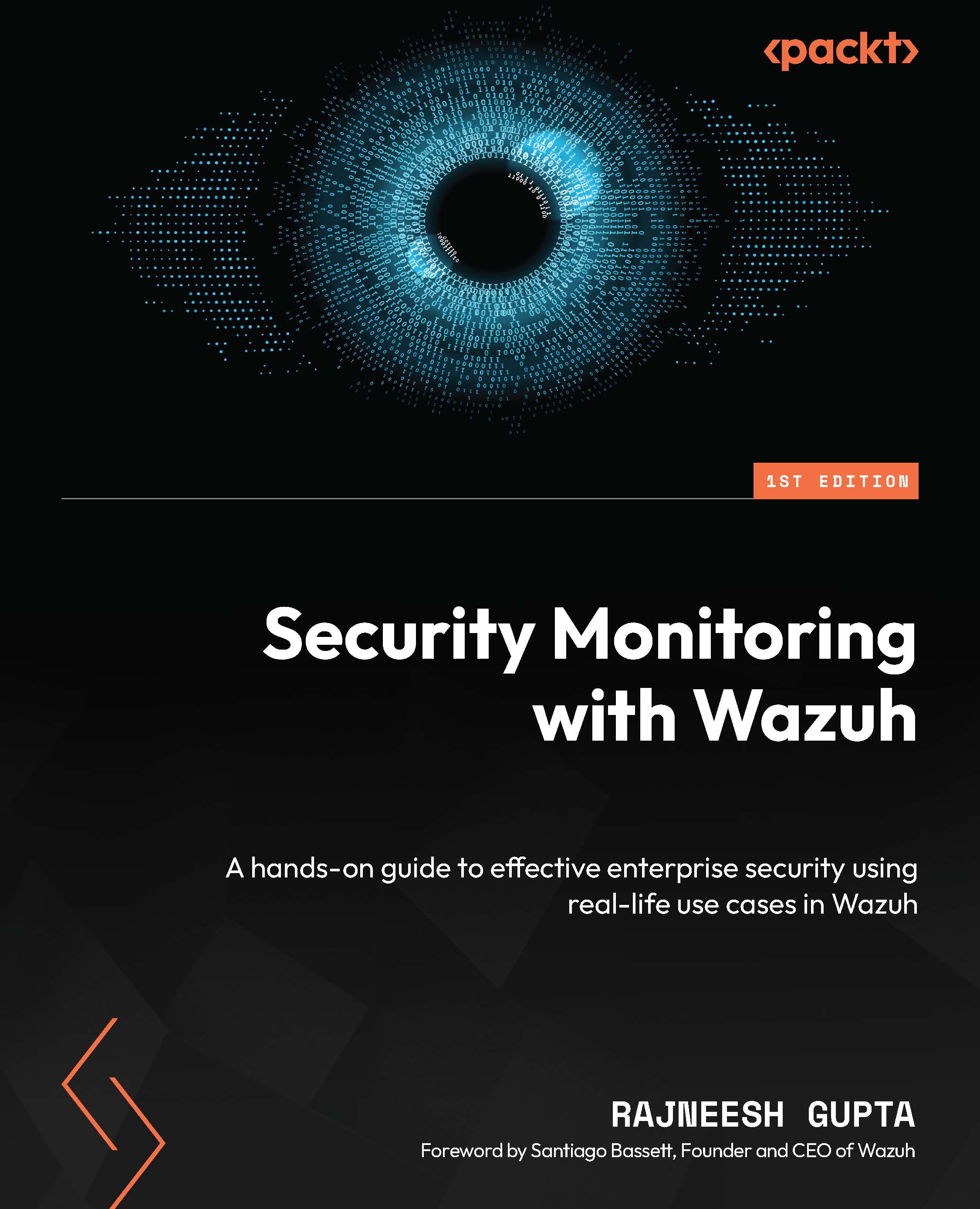What this book covers
Chapter 1, Intrusion Detection System (IDS) Using Wazuh, provides fundamentals on IDSs and Suricata and its capabilities and features, installing Wazuh and setting up Suricata, utilizing Suricata in threat detection, handling network scanning probes, identifying Metasploit exploits, simulating web-based attacks with DVWA, and measuring NIDS effectiveness with tmNIDS.
Chapter 2, Malware Detection Using Wazuh, introduces you to malware, using FIM for detection, integrating VirusTotal for enhanced analysis, and integrating Windows Defender and Sysmon.
Chapter 3, Threat Intelligence and Analysis, discusses enhancing Wazuh capabilities by integrating threat intelligence and analysis tools such as MISP, TheHive, and Cortex. This chapter includes real-world examples of threat intelligence in a variety of contexts, as well as instructions on configuring and utilizing TheHive, Cortex, and MISP for cooperative threat analysis and response.
Chapter 4, Security Automation and Orchestration Using Shuffle, covers the integration of Security orchestration, Automation, and Response (SOAR) with the Wazuh platform that can be utilized to streamline and enhance incident response processes. The chapter focuses on the implementation of automated workflows, playbooks, and response actions using Wazuh and Shuffle.
Chapter 5, Incident Response with Wazuh, focuses on Wazuh’s Active response capability to remediate threats in real time, covering several practical use cases such as blocking brute-force attempts and automatically isolating Windows machines.
Chapter 6, Threat Hunting with Wazuh, delves into the methodology of proactive threat hunting using Wazuh, focusing on log analysis, attack mapping, Osquery utilization, and command monitoring.
Chapter 7, Vulnerability and Configuration Assessment, explores vulnerability and policy assessment using Wazuh. It will cover the important parts of finding vulnerabilities, monitoring configurations, and following standard compliance frameworks in a business. This chapter also covers the basics of vulnerability assessment and compliance standards such as PCI DSS, NIST 800-53, and HIPAA. It also provides ideas on how to use Wazuh’s features to make sure your organization follows all of its security rules and policies.
Chapter 8, Appendix delves into a list of custom Wazuh rules to enhance security monitoring. It explores the creation of custom PowerShell rules to detect suspicious activities within Windows environments. Additionally, the chapter discusses the implementation of custom Auditd rules for auditing Linux systems, bolstering defense against potential threats. Moreover, it provides insights into crafting custom Kaspersky endpoint security rules, enabling comprehensive threat detection and response. Finally, it covers custom Sysmon rules mapped to certain MITRE ATT&CK® techniques.
Chapter 9, Glossary, provides a comprehensive glossary covering key terms and concepts essential for understanding security monitoring and Wazuh functionality. From active response, which automates response actions, to Amazon EC2 instances and beyond, each entry offers concise explanations. Terms such as compliance, IDS, and vulnerability detection module are elucidated, aiding you in grasping crucial security concepts. Additionally, tools such as PowerShell, Docker, and YARA are defined, highlighting their significance in modern cybersecurity practices. This glossary serves as a valuable reference for both novice and experienced security professionals who are navigating the complex landscape of security monitoring and threat detection.
































































